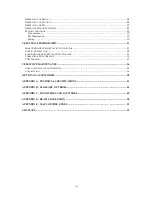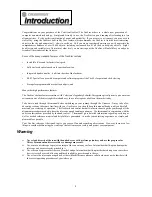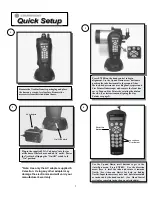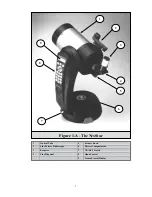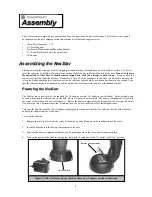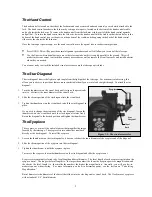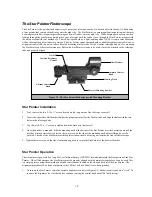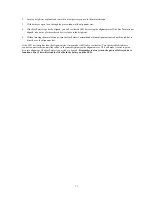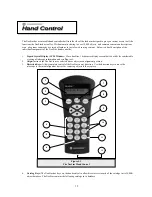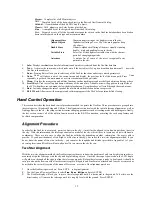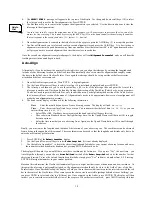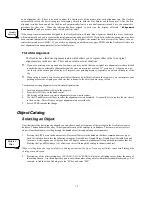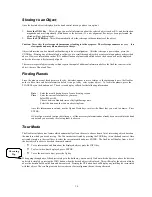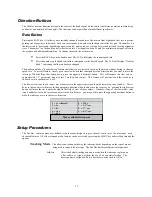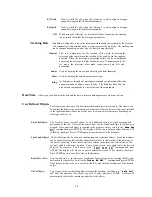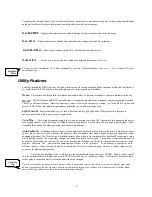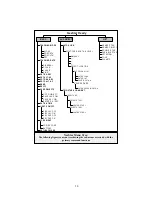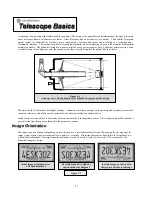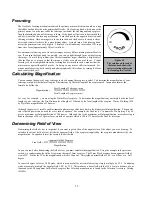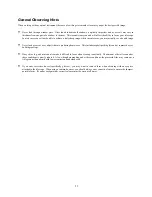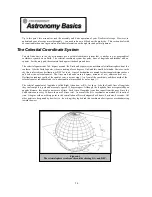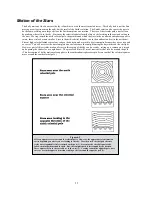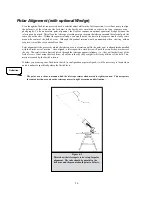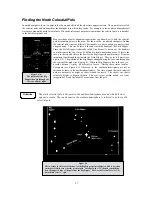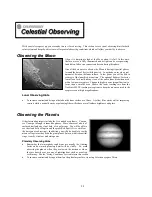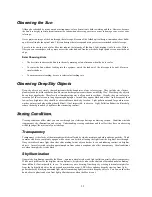
14
4.
The
message will appear in the top row of the display. Use the up and down scroll keys (10) to select
the star you wish to use for the first alignment star. Press ENTER.
5.
NexStar then asks you to center in the eyepiece the alignment star you selected. Use the direction buttons to slew the
telescope to the alignment star.
In order to accurately center the alignment star in the eyepiece, it will be necessary to decrease the slew rate of the
motors for fine centering. This is done by pressing the RATE key (11) on the hand controller then selecting the number
that corresponds to the speed you desire. (9 = fastest , 1 = slowest).
5.
Once the alignment star is centered in the field of view of the eyepiece, press the ALIGN key (2) to accept this position.
6.
NexStar will then ask you to select and center a second alignment star and press the ALIGN key. It is best to choose
alignment stars that are a good distance away from one another. Stars that are at least 40º to 60º apart from each other
will give you a more accurate alignment than stars that are close to each other.
Once the second star alignment is completed properly, the display will read
, and you will hear the
tracking motors turn-on and begin to track.
A
A
u
u
t
t
o
o
-
-
A
A
l
l
i
i
g
g
n
n
Alternatively, if you do not know the names of two bright stars , you can align the telescope by entering the longitude and
latitude of your observing location, and the NexStar will automatically choose two stars for alignment and roughly center
the stars in the field of view of the Star Pointer. Once again the telescope should be set up outside with all accessories
attached and the lens cover removed.
1.
Once the NexStar is powered on , Press ENTE
to begin alignment.
2.
Use the Up and Down scroll keys to select AutoAlign if it is not already displayed, and press ENTER.
3.
The telescope will then ask you to use the arrow keys (10) to level the telescope tube and point the front of the
telescope towards north. North can be found by finding the direction of the North Star (Polaris) or by using a compass.
You do not need to point at the North Star, only the north horizon. For help finding the direction of the North Star, see
the Astronomy Basics section of the manual. Alignment only needs to be approximate, however a close alignment will
make the auto alignment more accurate.
4.
The hand control display will then ask for the following information
Date - Enter the month, day and year of your observing session. The display will read
Time - Enter the current local time for your area. You can enter either the local time (i.e.
), or you can
enter military time (i.e.
).
•
Select PM or AM. If military time was entered, the hand control will bypass this step.
•
Choose between Standard time or Daylight Savings time. Use the Up and Down scroll buttons (10) to toggle
between options.
•
Select the time zone that you are observing from. Again, use the Up and Down buttons (10) to scroll through
the choices.
Finally, you must enter the longitude and latitude of the location of your observing site. The coordinates can be obtained
from a listing in the appendix of this manual. These coordinates can be saved so that the longitude and latitude only has to be
entered once from any given location.
1.
Press ENTER at the
display
2.
Use the Up and Down scroll keys to select
, if it is not already displayed.
3.
Use the table in Appendix C to locate the closest longitude and latitude for your current observing location and enter
those numbers when asked in the hand control, pressing ENTER after each entre.
The display will then ask if you would like to save these coordinates for future use. If you press "Yes", the next time you
AutoAlign the telescope, you can choose
!!!! """"
instead of the
, and enter the number for that
observing location. To save the entered longitude and latitude, simply press "Yes" and enter a number from 0-9. Pressing
ENTER will assign that number to your current position.
Based on this information, the NexStar will automatically select a bright star that is above the horizon and slew towards it. At
this point the telescope is only roughly aligned, so the alignment star should only be close to the field of view of the Star
Pointer finder. Once finished slewing, the display will ask you to use the arrow buttons to center the selected star with the red
dot in the center of the Star Pointer. If for some reason the chosen star is not visible (perhaps behind a tree or building) you
can press UNDO to select and slew to a different star. Once centered in the finder, press ENTER. The display will then
instruct you to center the star in the field of view of the eyepiece. When the star is centered, press ALIGN to accept this star
Helpfu
Hint
Summary of Contents for NexStar 5
Page 1: ...I IN NS ST TR RU UC CT TI IO ON N M MA AN NU UA AL L ...
Page 51: ...51 A Ap pp pe en nd di ix x E E M Ma ap ps s o of f T Ti im me e Z Zo on ne es s ...
Page 52: ...52 ...
Page 53: ...53 ...
Page 54: ...54 ...
Page 55: ...55 ...
Page 56: ...56 ...
Page 57: ...57 ...
Page 58: ...58 ...



